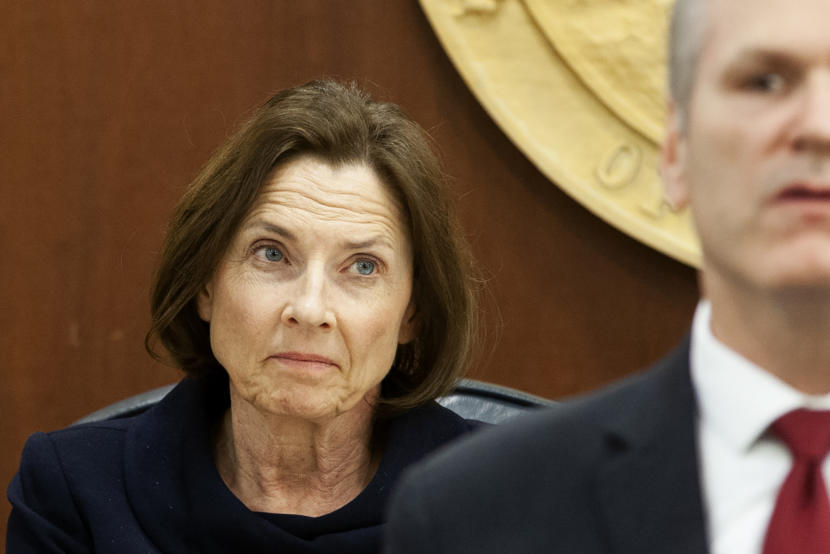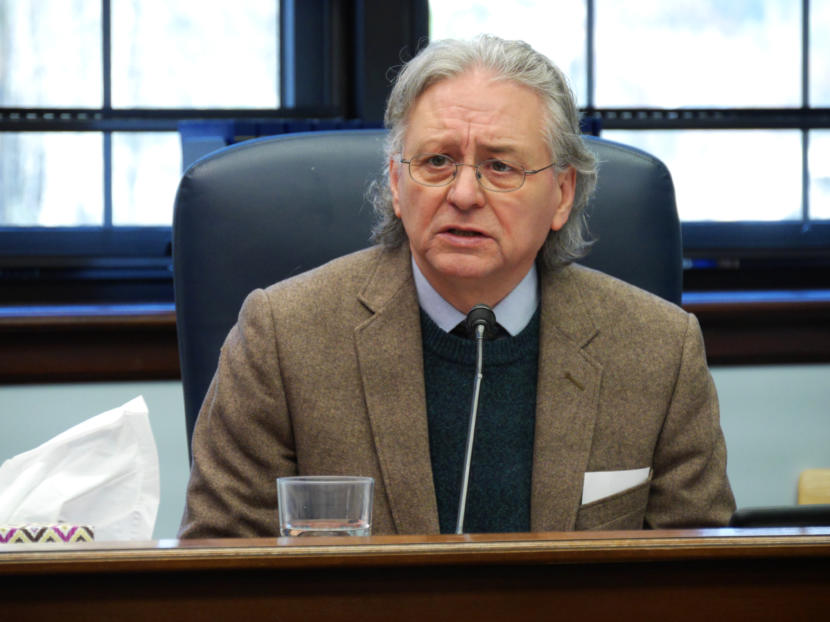
Alaska lawmakers are weighing whether to change the law that sets the amount of permanent fund dividends. The leaders in the Alaska Senate have different ideas about what that change will be — but said they may be able to reach common ground on a proposal this year.
Senate President Cathy Giessel said every senator supports permanent fund dividends.
“The question is how to make it sustainable, and how to protect the fund itself, which is truly our financial future,” she said. “If we can protect and grow the fund itself, we won’t be tied to the ups and downs of oil prices.”
Dividends used to be calculated using a formula set out in a 1982 law. But after oil prices fell five years ago, things changed. In 2016, former Gov. Bill Walker, an independent, cited that drop in revenue when he vetoed half of the dividend money. He said that the full amount threatened the future of the fund, dividends and the state economy.
Since then, the Legislature has set the dividend amount each year. Republican Gov. Mike Dunleavy was elected on a platform of restoring PFDs to the amount in the 1982 formula. But the Legislature didn’t agree to the roughly $3,000 dividends after Dunleavy proposed deep cuts to state services.
The Legislature hasn’t been able to agree on changing the formula. But Giessel, an Anchorage Republican, said she thinks this could be the year.
“Members of the House and Senate truly understand the math problem we have, and that if we overdraw the earnings part of the permanent fund itself, we’re going to be decimating future funds — future permanent fund dividends and the fund itself,” she said.
Giessel said that while the state can still cut the budget further, deep cuts could hurt the economy. And infrastructure spending also is needed.
“Roads, transportation, marine highway, all of this is what makes Alaska open for commerce, for business, right?” Giessel said. “So we need to make sure that our transportation infrastructure is robust, and it is durable, and it is maintained.”
Giessel said other items may be difficult to address this year, including the formula for funding schools.
“It takes at least two years, if not more, to address a formula of that magnitude,” she said.
She sees changing the dividend formula as a more realistic possibility for this year.
The 1982 dividend formula is based on the average permanent fund earnings of the most recent five years. That was the main use of the earnings until 2018, when the state began drawing from earnings to pay for government. And this draw is based on a different formula: roughly 5% of the fund’s total value.
Giessel said she thinks the Legislature will land on a solution of setting aside a quarter of that annual draw for dividends. Currently, that would be between $1,100 and $1,200.

Sen. Tom Begich, an Anchorage Democrat and the minority leader, also is interested in considering changes to the dividend formula.
But Begich said the dividend change should be part of a broader set of changes to close the $1.5 billion gap between what the state would spend with the current dividend formula and what it brings in.
“I don’t think that the dividend should be the primary means for balancing the budget,” Begich said. “What I do believe is that we are going to have to look at a sustainable dividend that will be lower than the statutory dividend today.”
Begich would like dividends to be higher than what Giessel is eyeing. For example, he’s open to setting dividends at one-third of the draw. That would put it similar to, or slightly below, the $1,600 dividend amount of the last two years.
Begich also wants the Legislature to increase the taxes paid by the oil and gas industry by $600 million to $700 million.
“If you’re going to be asking Alaskans to take that kind of sacrifice, then you have to be asking the industry that as well,” he said.
Giessel has opposed changing the oil tax system without first considering the effect on the industry.
And any change to either the dividend formula or oil taxes could face a veto from Dunleavy. The governor supports changing the state constitution to require public votes on dividend formula changes or tax increases. And he said in a recent interview that he doubts the Legislature will send him a change to the dividend formula that would reduce it to a quarter of the draw.
“I don’t think that’s going to happen, because I think the Legislature knows where I stand on this,” Dunleay said. “But I’m certainly willing to engage them in a discussion on what this is going to look like going forward, but it’s got to be something that the people support.”
It remains to be seen how quickly work on the dividend can be completed. Giessel said her personal goal is to finish the session by the end of April.